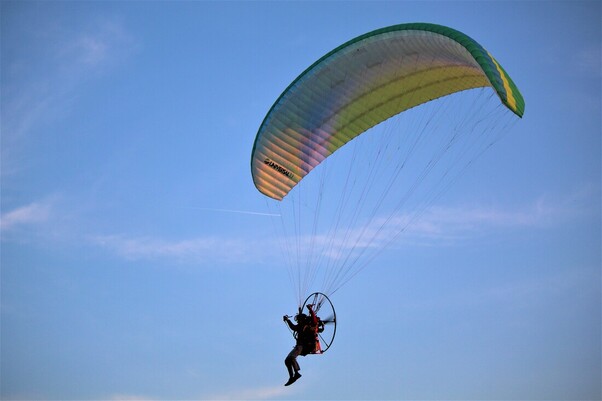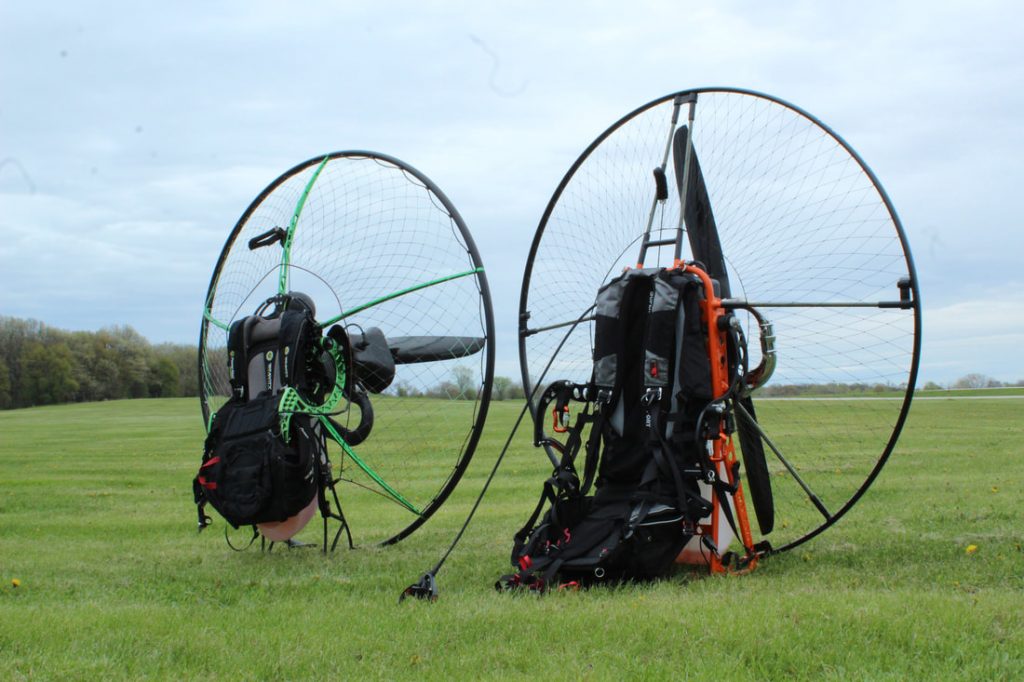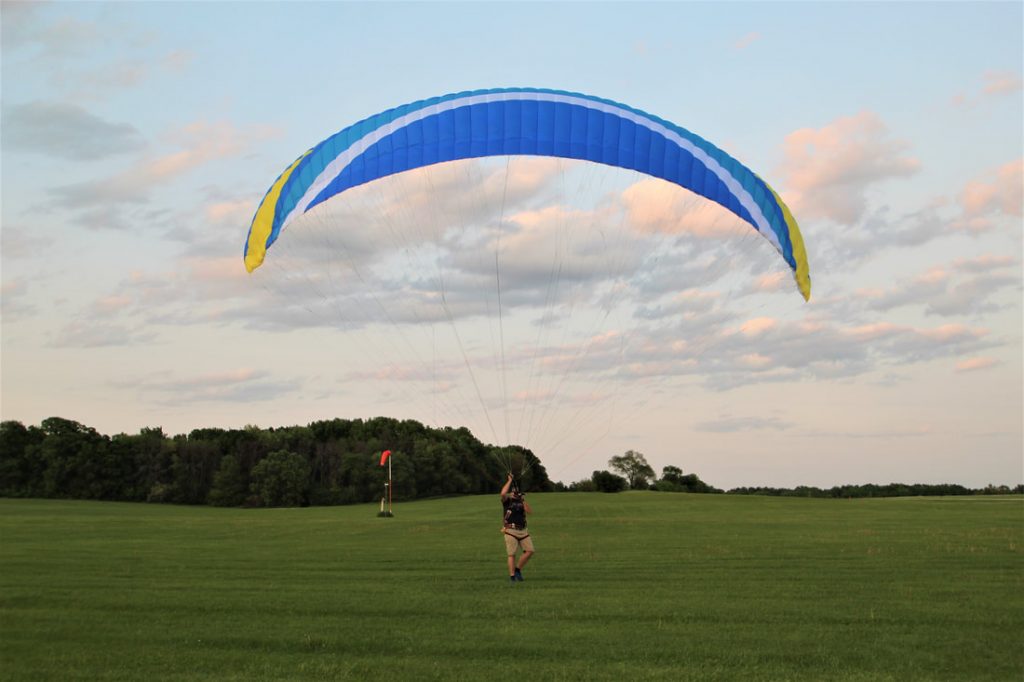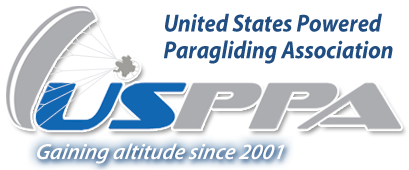Powered Paragliding
Noun
Also known as paramotoring or PPG, is a form of ultralight aviation where the pilot wears a motor on their back (a paramotor) which provides enough thrust to take off using a paraglider. It can be launched in still air, and on level ground, by the pilot alone — no assistance is required.
Full Setup

- Typical setup includes a motor, wing, and PPG helmet
Motor

- Motor setup includes harness
- Common motors used Vittorazi – Moster 185 & Atom 80 based on your size
Wing

- Wing size depends on total weight of pilot and paramotor
What is Powered Paragliding?
PPG is the simplest form of flight: no gauges, no windows, just you floating in the air. With only a butt fan and wing you’re flying in a flying lawn chair! It is easy to transport, easy to launch, and easy to land.
Ratings?
The United States Powered Paragliding Association (USPPA)
- PPG1 = Beginner
- PPG2 = Novice
- PPG3 = Advanced
How long does training take?
7 Day block schedule
We go 7 days straight taking you from zero to hero and with your PPG 2 certification
Flex Schedule
3-4 weeks meeting when your schedule allows at East Troy Airport
Is it Safe?
Powered paragliding is one of the safest forms of aviation. Good equipment and credible training lead to an increased safety factor in our sport. Most accidents in PPG are due to pilot error.
Cost?
Powered Paragliding is the cheapest form of aviation that exists today. No license is required to fly these machines. No hanger is necessary to store your craft. It costs around $2.50 per hour to operate.
Fun facts
- Max Altitude: 18,000 legally
- Speed: 20-40 mph.
- Weight: 45-75 lbs with motor & wing
- Cost (New): Around $10,000 for training and gear
- Fuel: 1.2 – 5 US Gallons auto fuel
- Range: 45-100 miles (no wind)
- Endurance: 1 – 3 hrs.
- Training: 1-8 Days Solo — varies dramatically, 5-7 Days to become certified PPG2 level.
- Motor: 12-25 hp Two-Stroke. 16 hp Four Stroke. 70-165 Lbs Thrust
- Propeller: 30″-51″ Wood or composite. 2-4 blade.
- Launch/Land Area: 40′ x 300′ for highly experienced pilots, 300′ x 900′ for new pilots
- Glide Ratio: 6:1 With a motor. Wings are usually higher but the motor adds drag.

